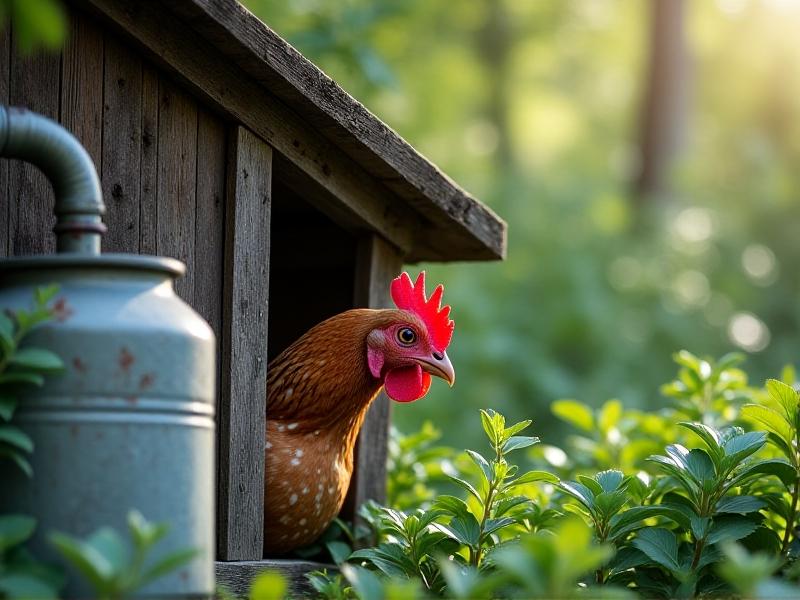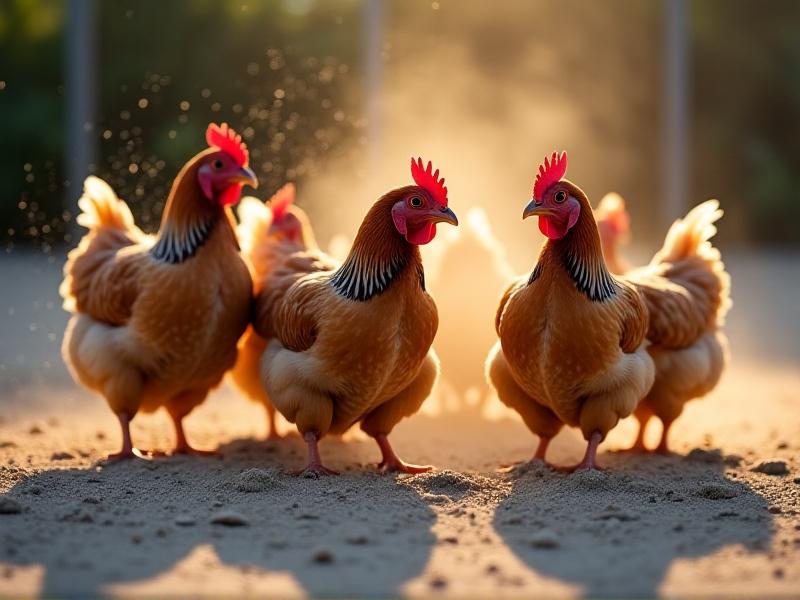Maintaining Winter Egg Production in Urban Settings
Understanding the Challenges of Winter Egg Production in Urban Settings
Winter poses unique hurdles for urban chicken keepers aiming to maintain consistent egg production. Colder temperatures force hens to divert energy from laying eggs to staying warm, while reduced daylight hours disrupt their natural laying cycles. Urban environments add complexity: limited space restricts coop insulation options, and noise or odor regulations may limit proactive measures. Additionally, city dwellers often lack the infrastructure of rural farms, making access to specialized feed or veterinary care more challenging. Addressing these issues requires a blend of adaptive strategies tailored to small-scale, space-efficient setups.
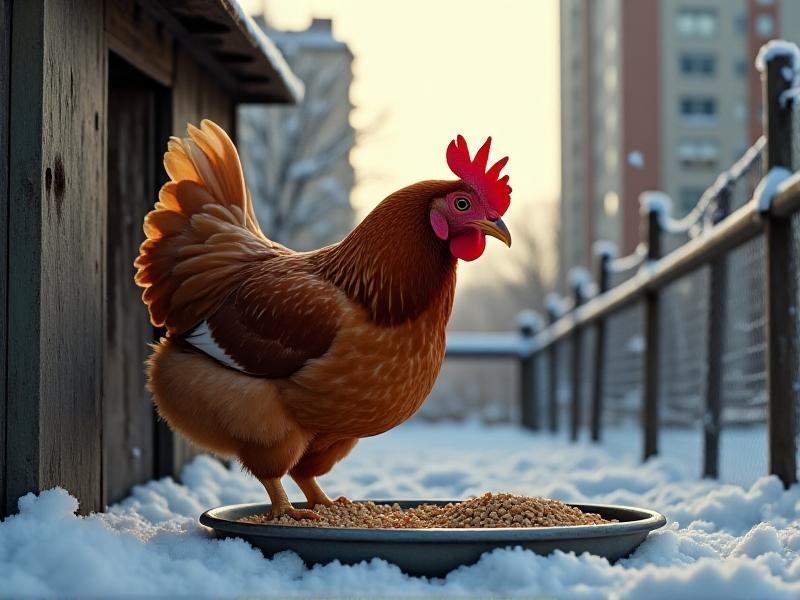
Key challenges include balancing ventilation and insulation to prevent respiratory issues, managing light exposure without disturbing neighbors, and sourcing affordable winter feed. Urban microclimates—such as wind tunnels between buildings or heat islands from pavement—can exacerbate temperature fluctuations. Success hinges on understanding these localized factors and designing solutions that align with both hen biology and city living constraints.
Selecting Cold-Hardy Chicken Breeds for Urban Flocks
Not all chicken breeds thrive in winter, especially in urban settings. Cold-hardy varieties like Rhode Island Reds, Plymouth Rocks, and Orpingtons excel due to dense feathering, smaller combs (reducing frostbite risk), and calm temperaments suited to confined spaces. These breeds maintain higher winter egg production compared to Mediterranean varieties like Leghorns, which prioritize heat tolerance over cold resilience.
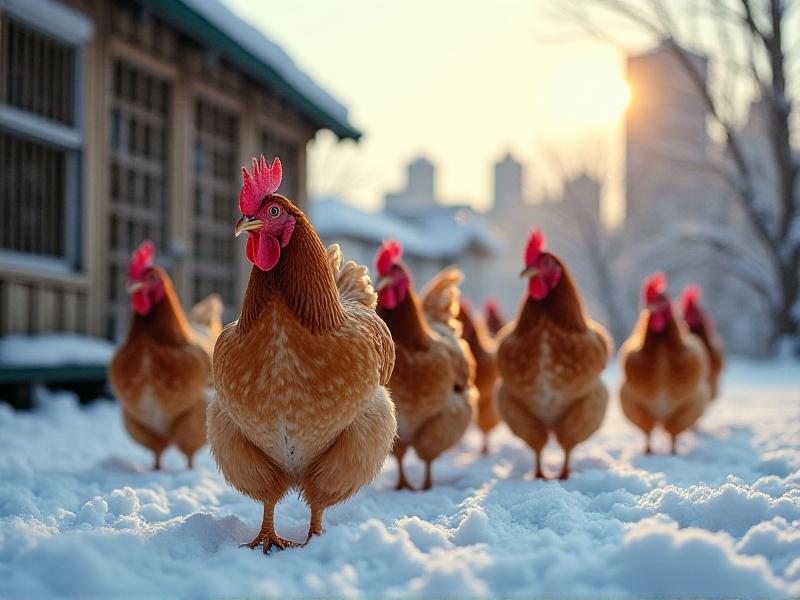
When selecting breeds, prioritize dual-purpose birds that offer both egg production and meat, as they typically have sturdier builds. Bantam breeds, while smaller, often struggle in extreme cold. Research local urban poultry communities to identify breeds proven in your climate. For example, Salmon Faverolles thrive in damp winters due to their feathered feet, making them ideal for rainy coastal cities like Seattle.
Designing a Winter-Ready Coop: Insulation and Ventilation
A well-designed coop is critical for winter productivity. Insulate walls with materials like rigid foam boards or recycled denim batting, ensuring a vapor barrier to prevent moisture buildup. Elevate the coop slightly to avoid ground frost, and use deep litter bedding—a compostable mix of straw, wood shavings, and diatomaceous earth—to generate natural heat through decomposition.

Ventilation is equally vital: install adjustable vents near the roof to allow humidity to escape without creating drafts at hen level. Avoid sealing the coop completely, as trapped moisture increases frostbite and respiratory disease risks. For ultra-compact urban coops, attach a removable clear acrylic panel to the run area, creating a greenhouse-like space that traps solar heat during daylight hours.
Supplemental Lighting Strategies to Boost Egg Laying
Chickens require 14–16 hours of light daily to sustain egg production. In winter, urban keepers use programmable LED lights to simulate dawn and dusk. Install fixtures with diffusers to prevent stress, and opt for warm-white bulbs (2700K) to mimic natural sunlight. Timing matters: gradually extend light in the early morning rather than evening to avoid disrupting roosting behavior.
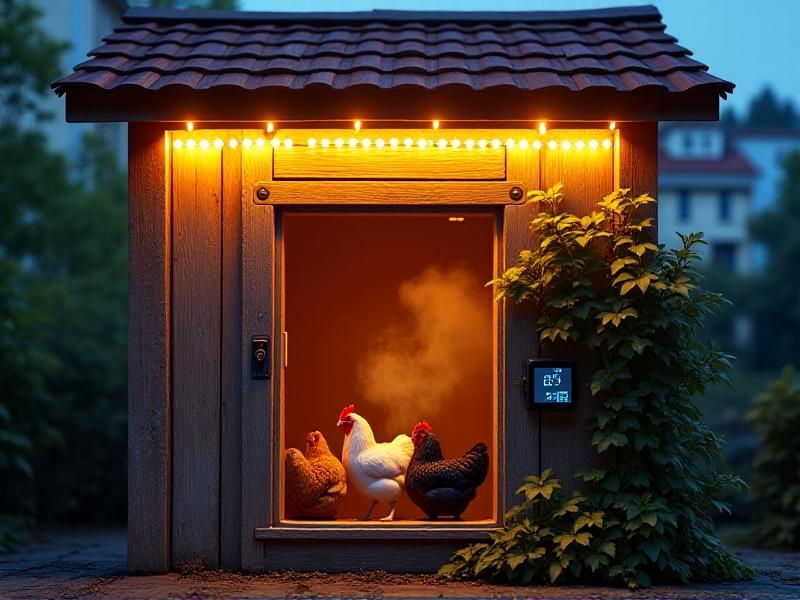
Solar-powered lights offer sustainable solutions for balconies or rooftops without electrical access. However, avoid overlighting—excessive brightness can cause aggression or premature molting. For ethical considerations, some keepers advocate for natural winter breaks in laying, allowing hens to recover nutrient reserves. If pursuing this approach, ensure birds have ample calcium and protein stores before reducing light exposure.
Optimizing Nutrition and Hydration During Cold Months
Winter diets must compensate for energy spent staying warm. Switch to a high-protein feed (18–20%) with added cracked corn for slow-release calories. Offer supplements like black oil sunflower seeds, which provide fat and amino acids, and oyster shell grit for calcium. Fermented feed—grains soaked in water for 24–48 hours—boosts digestibility and nutrient absorption.
Hydration is often overlooked. Use heated bases or nipple waterers to prevent freezing, and add apple cider vinegar (1 tablespoon per gallon) to inhibit bacterial growth. Scatter treats like warm oatmeal or mealworms in the run to encourage movement, which improves circulation and prevents frostbite. Monitor body condition: hens should feel plump but not obese when handled.
Monitoring Health and Preventing Winter-Specific Ailments
Frostbite targets combs, wattles, and toes. Apply petroleum jelly to exposed skin during subfreezing weather, and ensure perches are wide enough (2–4 inches) to let hens cover their feet with feathers. Check for pale combs or limping, which signal anemia or mites. Increase coop cleanliness in winter—damp bedding harbors parasites and molds.
Respiratory illnesses spread faster in enclosed coops. Isolate sneezing or wheezing birds immediately, and add garlic or oregano to water as a natural antimicrobial. For urban-specific risks, test soil in runs for heavy metals if using reclaimed materials, and avoid de-icing chemicals near coops, as salt ingestion can be fatal.
Community Solutions for Urban Chicken Keepers
City poultry enthusiasts often collaborate to overcome space and resource limitations. Shared coops in community gardens allow members to pool costs for insulation or heating. Workshops on winter chicken care—hosted by urban farms or homesteading stores—build local knowledge networks. Some neighborhoods implement egg CSA programs, trading eggs for volunteer coop maintenance during harsh weather.
Technology aids collaboration: apps like Flockendar help urban keepers coordinate feeding rotations or vet visits. In cities like Portland and Minneapolis, winter poultry swaps let owners temporarily rehome less cold-tolerant breeds with suburban partners. These initiatives foster resilience while strengthening urban food systems.
Navigating Legal Considerations for Urban Livestock in Winter
Urban ordinances often restrict coop placement, flock size, or noise—rules that gain scrutiny in winter when hens vocalize more or coops require visible modifications. Research local codes regarding heating equipment; some cities ban heat lamps in coops due to fire risks. Obtain permits for structural changes like adding insulation or roofing.
Preempt complaints by informing neighbors about winter care plans, such as using silent panel heaters instead of noisy radiant heaters. Document coop conditions with photos to demonstrate compliance if disputes arise. As urban agriculture grows, joining advocacy groups can help shift restrictive policies—for example, Toronto’s Hens in the City campaign successfully revised bylaws to allow larger winter coops.





